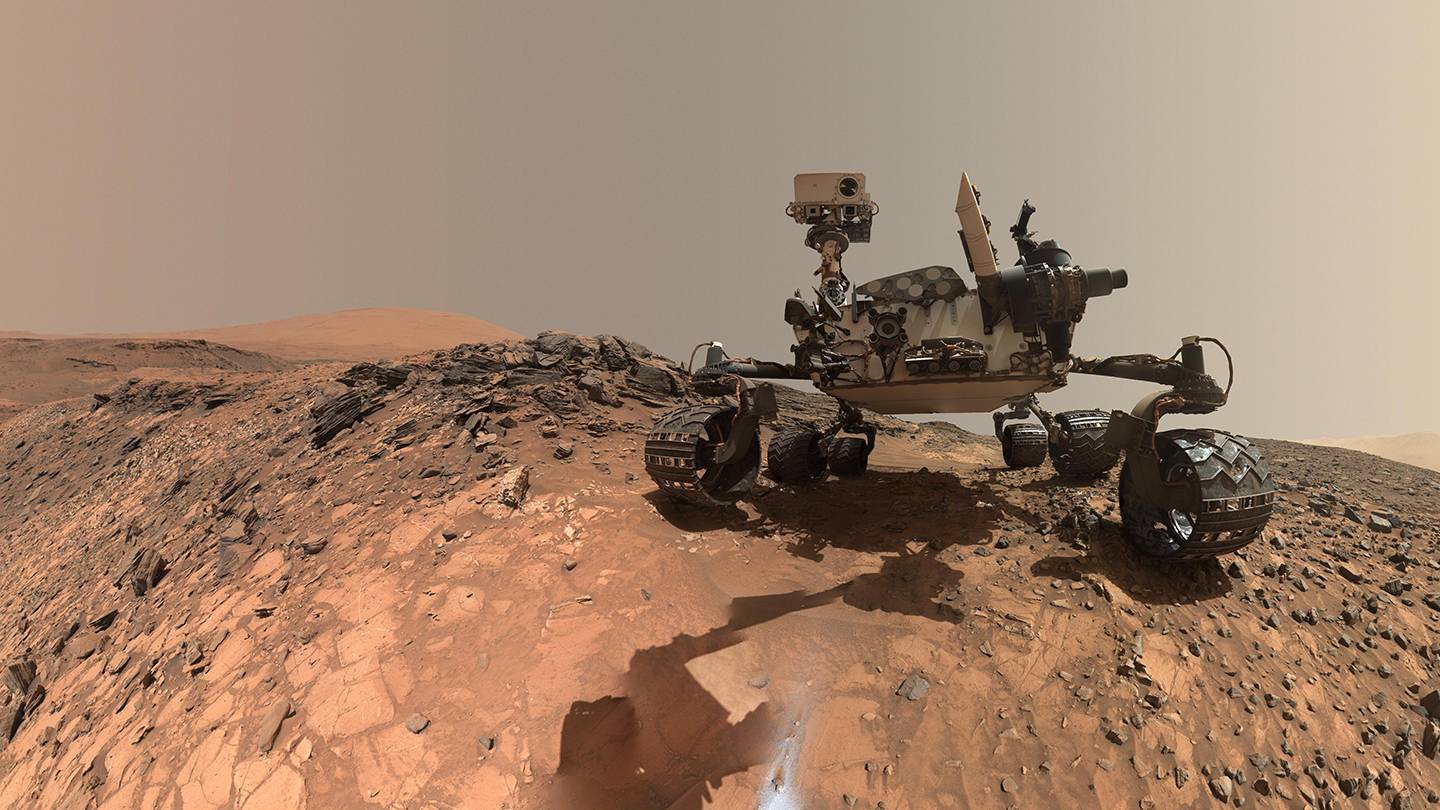Since 2012, Mars Curisoity Rover has been exploring the planet’s Gale Crater. In that time, the tools onboard NASA’s car-sized planetary exploration vehicle have been collecting lots of data to study biological, climate and geologic aspects of Mars.
With all of the tools onboard, scientists recently found a new use for the rover: measuring gravity from the surface of the planet.
They did so by utilizing accelerometers, a more precise version of navigation tools that are also in smartphones. A team that includes Johns Hopkins University professor Kevin Lewis was able to recalibrate the accelerometers onboard Curiosity to be used for gravimetry, or the measurement of small changes in gravitational fields. Results of the measurements were published on Thursday in the journal Science. The group of authors on the paper also included Nicholas Schmerr from the University of Maryland, College Park.
“Curiosity, essentially, has a new science instrument six and a half years into its mission,” Lewis, an assistant professor in Johns Hopkins University’s Earth and Planetary Sciences department, told the JHU Hub. “This allows us to get new information about the subsurface of Mars in ways the rover was never designed to do.”
Mars, you are my density.
In '72, Apollo 17 astronauts measured gravity on the Moon with a special tool called a gravimeter. I repurposed accelerometers to take similar measurements on Mars. Turns out Mount Sharp isn't as dense as expected 🤔 https://t.co/ZdiTtWLd4r#MoonToMars pic.twitter.com/S3Kbq3Dgmy
— Curiosity Rover (@MarsCuriosity) January 31, 2019
The measurements can be conducted from a satellite in orbit, but the smallest changes require ground-based readings. Lewis and team were able to take the measurements as Curiosity climbed the 5-km. Mt. Sharp. Essentially, the rover measured the weight of the mountain.
According to the Hub, it’s the first time surface gravity measurements have been taken on a planet other than our own.
The results showed that Gale Crater contains low-density rock, which suggests the crater floor was not once buried under rock as scientists have theorized.
Here on Earth, we’ve seen a number of hackathon participants find unexpected uses for accelerometers, but making a discovery on Mars is by far the most impressive example.
Before you go...
Please consider supporting Technical.ly to keep our independent journalism strong. Unlike most business-focused media outlets, we don’t have a paywall. Instead, we count on your personal and organizational support.
3 ways to support our work:- Contribute to the Journalism Fund. Charitable giving ensures our information remains free and accessible for residents to discover workforce programs and entrepreneurship pathways. This includes philanthropic grants and individual tax-deductible donations from readers like you.
- Use our Preferred Partners. Our directory of vetted providers offers high-quality recommendations for services our readers need, and each referral supports our journalism.
- Use our services. If you need entrepreneurs and tech leaders to buy your services, are seeking technologists to hire or want more professionals to know about your ecosystem, Technical.ly has the biggest and most engaged audience in the mid-Atlantic. We help companies tell their stories and answer big questions to meet and serve our community.
Join our growing Slack community
Join 5,000 tech professionals and entrepreneurs in our community Slack today!

Major state funding boost means more Maryland college students can get tech internships

Cal Ripken Jr. essay: The MLB legend explains his drive to build STEM centers in schools across the nation

The end of software as technology



